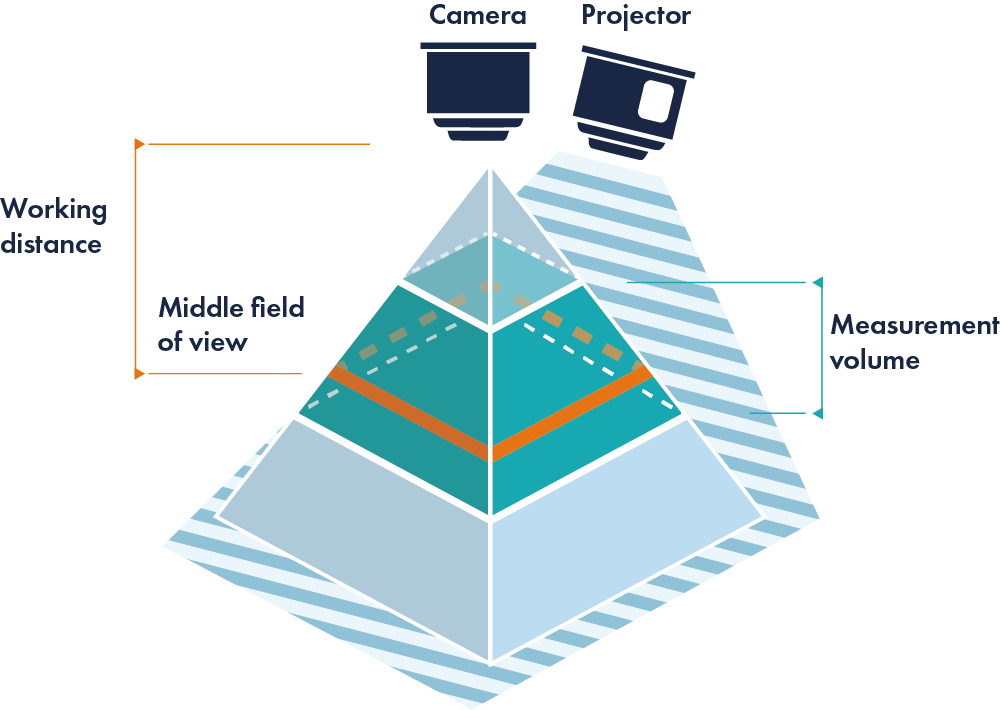High-Resolution 3D Scanning.
Engineered by bluelynes.
advanced 3d scanning for diverse applications
Bluelynes technology is the advanced, patented, optical technology for 3D-scanning developed by IDloop. The technology allows for a fast, high-resolution 3D-scan by using structured light. The light is projected onto a surface in a known pattern and deformed by the surface structure. By imaging the deformed light pattern with a camera, the 3D-surface is reconstructed via triangulation.

Bluelynes technology is highly customizable for different uses and can capture 3D surface details from a wide variety of capturing distances and with numerous variations in field-of-view. The resulting 3D-point cloud consists of millions of data points for the high resolution of surface details. Because bluelynes technology offers a fast scan of almost any surface, the object can even be in motion during the scan. With such flexibility in the range of parameters, it is not surprising that bluelynes technology has applications in many sectors. It has been successfully used in the high-security sector to scan biometric features, and it is also used for industrial 3D imaging–in surface inspection, reverse engineering, quality control, and inline and offline inspection.
IDloop GmbH
Moritz-von-Rohr-Straße 1a
07745 Jena | Germany
+49 (0)3641 55405 0

Co-funded by the Free State of Thuringia
As part of the consulting guidelines of the Free State of Thuringia, IDloop GmbH receives funding for consulting and process support. These support strategies for the development and sustainable positive development and safeguarding of SMEs. The resulting findings and recommendations for action are recorded in a consultancy report. Funding is provided by the European Social Fund Plus and the Free State of Thuringia.

Let's talk!
Send us a mail to

